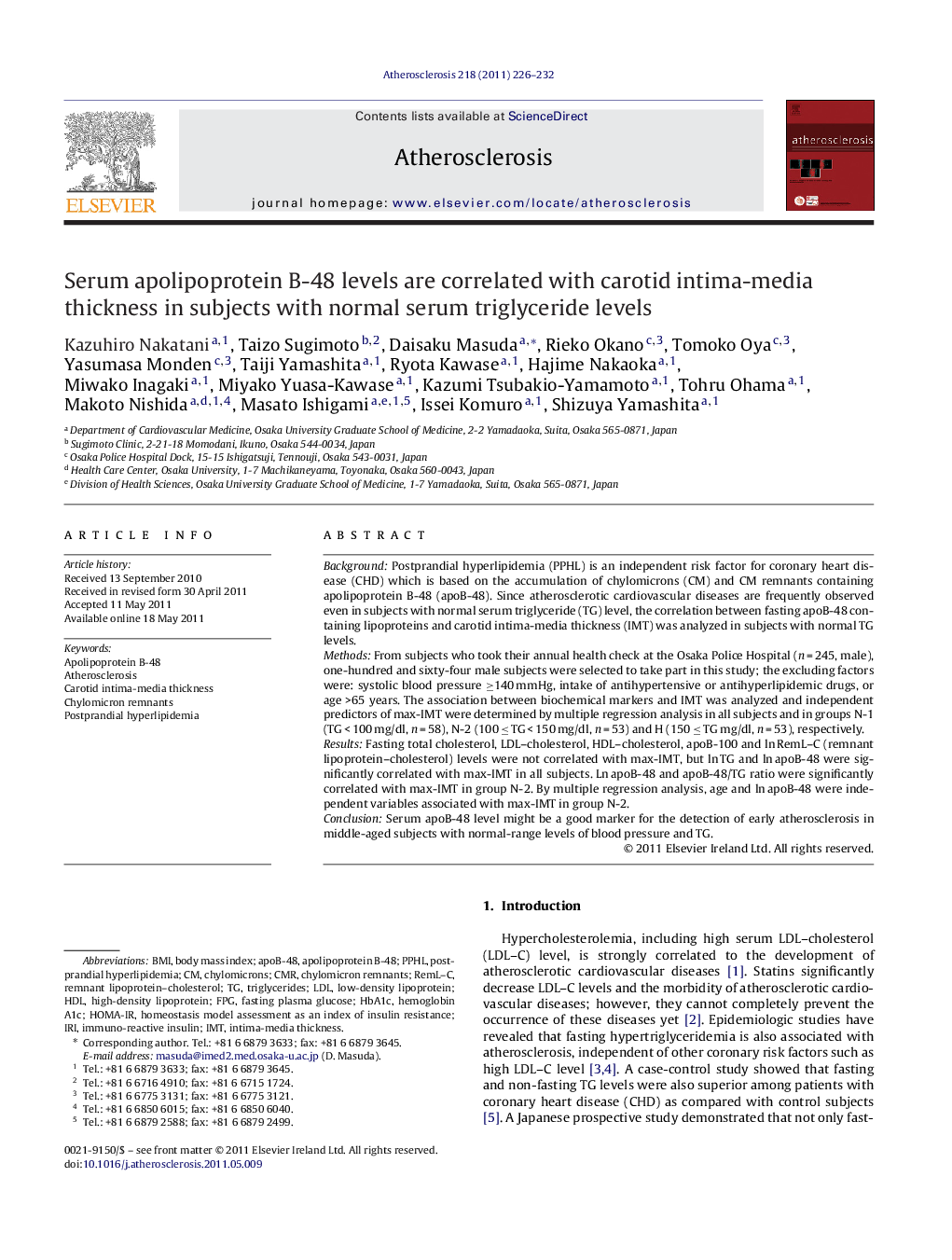| Article ID | Journal | Published Year | Pages | File Type |
|---|---|---|---|---|
| 5950586 | Atherosclerosis | 2011 | 7 Pages |
BackgroundPostprandial hyperlipidemia (PPHL) is an independent risk factor for coronary heart disease (CHD) which is based on the accumulation of chylomicrons (CM) and CM remnants containing apolipoprotein B-48 (apoB-48). Since atherosclerotic cardiovascular diseases are frequently observed even in subjects with normal serum triglyceride (TG) level, the correlation between fasting apoB-48 containing lipoproteins and carotid intima-media thickness (IMT) was analyzed in subjects with normal TG levels.MethodsFrom subjects who took their annual health check at the Osaka Police Hospital (n = 245, male), one-hundred and sixty-four male subjects were selected to take part in this study; the excluding factors were: systolic blood pressure â¥140 mmHg, intake of antihypertensive or antihyperlipidemic drugs, or age >65 years. The association between biochemical markers and IMT was analyzed and independent predictors of max-IMT were determined by multiple regression analysis in all subjects and in groups N-1 (TG < 100 mg/dl, n = 58), N-2 (100 â¤Â TG < 150 mg/dl, n = 53) and H (150 â¤Â TG mg/dl, n = 53), respectively.ResultsFasting total cholesterol, LDL-cholesterol, HDL-cholesterol, apoB-100 and ln RemL-C (remnant lipoprotein-cholesterol) levels were not correlated with max-IMT, but ln TG and ln apoB-48 were significantly correlated with max-IMT in all subjects. Ln apoB-48 and apoB-48/TG ratio were significantly correlated with max-IMT in group N-2. By multiple regression analysis, age and ln apoB-48 were independent variables associated with max-IMT in group N-2.ConclusionSerum apoB-48 level might be a good marker for the detection of early atherosclerosis in middle-aged subjects with normal-range levels of blood pressure and TG.
